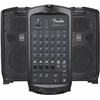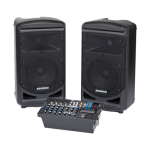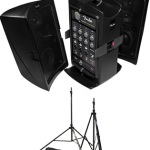
What Are Noise Cancelling Headphones?
For commuters and travelers faced with noisy planes, trains, and buses, noise cancelling headphones are more than a luxury: they’re a necessity.
Noise cancelling headphones cancel annoying background sounds by employing a variety of techniques, both active and passive.
Active noise cancelling technology blocks sounds such as plane engines and train vibrations by creating interference patterns. Some models such as those by Able Planet also boost certain frequencies to enrich sound quality, increasing speech comprehension and music reproduction.
Passive noise cancelling features block sound by using earcups or in-ear canalphones to muffle extraneous noise.
A side benefit of noise cancelling headphones is the ability to hear better without cranking up the volume of your media player, cutting down on the risk of hearing damage down the road.
A wide variety of noise cancelling headphones are available that fit the needs and budgets of everyone from the casual listener to the serious audiophile. Choosing the noise cancelling headphones that are right for you is simple once you understand how they work and what they offer!
How Do Noise Cancelling Headphones Work?
Noise cancelling headphones employ two chief methods of ambient noise reduction: active and passive.
Active noise cancelling headphones use electronics to identify and block steady environmental sounds.
They do this by picking up ambient sounds with tiny microphones built into the outside of the headphones, and creating sound waves that mimic the unwanted noise.
Here’s the tricky part: the mimicked sound waves are 180 degrees out of phase with the original sound, creating an “anti-noise” signal or interference pattern that cancels them out. The result is fuller sound at lower volumes.
Although active noise cancelling headphone technology was pioneered by Bose, other manufacturers like Shure, Sennheiser and Able Planet offer modern technological solutions that go far beyond the original Bose technology (and at better price points).
Active noise cancelling headphones work best on steady frequencies in the lower register. They are ideal for cutting down on noises such as refrigerators, car engines, or the constant background hum of an airplane.
The downside of active noise-cancelling technology (particularly in low-end headphones) is background hiss, although this tends to be less of a problem when audio is playing.
Additionally, high frequencies and intermittent sounds are more difficult to capture and cancel. Thus, active noise cancelling headphones won’t do much to cut out conversations.
Passive noise cancellation uses sound-isolating techniques to seal off the ears and cut down on unsteady sounds or high frequencies that are difficult to isolate electronically.
Most often, this is accomplished with large earcups like the familiar bulky cans used in recording studios. Generally, however, the bigger the earcup, the more uncomfortable some listeners find them, especially when used for extended listening sessions.
Other passive noise cancellation methods include earbuds (also called canalphones) that firmly press into the ear canal itself, sealing off the ear much like earplugs with a built-in speaker.
Manufacturers such as Shure (who pioneered this technology with their in-ear monitoring systems) offer canalphones in a variety of sizes and price ranges.
Although not for everyone – some people dislike the feeling of having something lodged in their ear canal – in-ear canalphones offer the maximum noise cancellation possible with purely passive devices.
What Other Enhancements Are Available For Noise Cancelling Headphones?
Audio manufacturers often add travel-friendly features to noise cancelling headphones. These include adapters that plug into airplane audio systems, retractable cords, collapsible headband designs for portability, and carrying bags.
A power switch is an often overlooked but crucial feature that allows listeners to use noise cancelling headphones with the active electronics switched off to prolong battery life.
In-line volume and mute controls are another handy enhancement, particularly in situations when listeners need to cut the volume to hear announcements from the pilot or train conductor.
In addition, Able Planet is offering noise-cancelling headphones which enhance frequencies affected by hearing impairment.
Specifically, Able Planet’s patented electronic enhancement called Linx Audio, originally developed to increase listening comprehension for hearing aids, boosts the high and mid-range signals so listeners (with and without hearing loss) can better appreciate both speech and music.
Linx Audio works by way of a process Able Planet calls Harmonic Enrichment.
Harmonic Enrichment takes advantage of the way that the human ear relays sound to the brain. Tiny patches of hair in the inner ear sway and move when stimulated by audio waves. The brain interprets these movements as sound sensations.
Although the brain perceives each musical note or spoken syllable as a single sound, each actually consists of multiple combined frequencies called harmonics that stimulate different sets of hairs in the inner ear.
High sound pressure levels can damage the delicate hairs in the inner ear and cause hearing loss. But since this damage usually only affects some inner ear hairs, enhancing other harmonics within a sound can stimulate different, undamaged inner ear hairs, helping the brain “fill in” missing frequencies.
Another feature of Linx Audio is active distortion reduction. Boosting volume can “clip” the peaks of sound waves, causing distortion. Linx Audio’s distortion reduction technology takes the jagged peaks of clipped waveforms and “rounds them off,” resulting in smoother sound for the listener.
Able Planet’s innovations and competitive prices have won fans among frequent headphone listeners, although it remains to be seen how many audiophiles they can lure away from established heavy hitters like Shure and Sennheiser.
What Noise Cancelling Headphones Are Right For You?
Noise cancelling headphones are available with a range of prices and features to satisfy nearly everyone, whether you’re a discriminating audiophile or a commuter on a tight budget.
Consider carefully what your needs are before choosing a set of noise cancelling headphones. If you like to listen to podcasts on your subway commute, an inexpensive set of canalphones or low-end headphones may be right for you.
If you’re a serious audiophile, on the other hand, you may want to invest in larger earcups, sturdier construction, or higher-end speakers for increased sound quality- especially if frequent traveling is on your agenda.
AudioLinks offers a variety of noise cancelling headphones featuring both active and passive technology to fit a variety of needs and budgets. Expert advice from our staff of technicians is just a phone call (1-212-766-0248)or email away!


